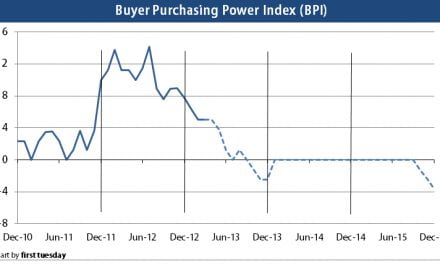The Federal Housing Administration (FHA) recently launched yet another foreclosure prevention program to address the plight of underwater homeowners, called a ‘FHA Short-Refi Program,’ the ‘short’ standing for a process also known as a cramdown or strip-away of excessive loan balances. The new conditions allow upside-down homeowners who are current on their payments to refinance into a new mortgage which the FHA will then insure.
However, the refinancing is contingent on the existing mortgage lender agreeing to a minimum 10% discount (principal reduction) on the payoff. Worse, the program calls only for voluntary lender participation, which is not going to happen when the owner is current on payments — essentially creating a “Catch-22.”
Here are the refinancing conditions:
- the homeowner’s mortgage balance exceeds the current value of their home (negative equity);
- the homeowner is current on their mortgage payments;
- the property securing the mortgage is the homeowner’s primary residence;
- the homeowner has a Fair Isaac Corporation (FICO) score of at least 500;
- the homeowner’s total payments on all monthly obligations do not exceed 50% of their gross monthly income;
- the refinanced loan is not an FHA-insured loan;
- the homeowner meets standard FHA underwriting requirements;
- the refinanced amount is within FHA limits for the county where the property is located;
- the lender agrees to reduce the principal balance on payoff by at least 10%; and
- the lender of any second mortgage agrees to subordinate to the new FHA-insured loan.
Loan servicers on the paid-off mortgage are paid $500 on payoff by the refinance. The paid-off lender receives six to 21 cents for every dollar discounted from the principal balance. This incentive money comes from the Troubled Asset Relief Program (TARP).
The FHA is hoping lenders will net more from reducing the principal for underwater homeowners than by the alternative of foreclosure.
first tuesday take: This program, as with every other government program providing some type of mortgage relief during this recession, was dead on arrival for California negative equity homeowners.
Collective pressure among lenders prevents any one lender from independently reaching out to help negative equity homeowners who are current on their mortgage payments. They fear that cutting a break for any one person who is delinquent will open the door to the 90% of negative equity homeowners who are still paying their mortgages. This is the “moral risk” lenders fuss about, and use as the reason for forcing homeowners to default and ruin their credit (FICO score) before discussing any relief on their loan.
Since they won’t offer any respite on their own, the government is forced to step in and persuade them. However, lenders will only reduce principal if:
- the Net Present Value (NPV) points to more money under the subsidy than from foreclosure; or
- bankruptcy courts get renewed authority to cram down single family residence (SFR) loans.
The government’s disapproval of lenders forcing homeowners to default before offering any realistic aid is not yet strong enough to merit a wider-reaching solution. Presently, the new Truth in Lending Act (TILA) regulation of this practice applies only to new home loans.
Agents and brokers need to keep an eye on this refinance program as it will be an indication of whether lenders choose to cut their losses by accepting a subsidy in lieu of an unsubsidized loss on a foreclosure. Real estate owned (REO) inventory will be affected (increased), as will the need for rental properties for the relocation of foreclosed homeowners’ (decreased). However, the program was crippled from the get-go by the non-delinquency requirement abhorred by lenders and the voluntary lender participation.
Relief for the California market will only occur when principal reduction — the cramdown — is attainable.
Re: “FHA launches short refi opportunity for underwater homeowners” from the Department of Housing and Urban Development (HUD)














please give me the details on how to apply for this program I need the help so very badly. I qualify for this plan but don’t know how to apply
Where does one start? Who do I go to?
This type of refinance is very easy..It does take time as you are the one negotiating with the clients current lender..once you have the lenders approval to do the short refinace/short payoff all you would need to do is qualify the clients/co borrowers for their new loan amount thru your direct lender/bank. very easy but does take time..if you have a processor to do the follow up phone calls with lender and not lose focus on your regular deals..you will have much success.
good luck,
Diego
Give all paying and people in trouble or not the right to refi @ 4% as a streamline
The lower payment stimulates consumers
And the consumation stimulates jobs
Where would one apply for this new program? thanks